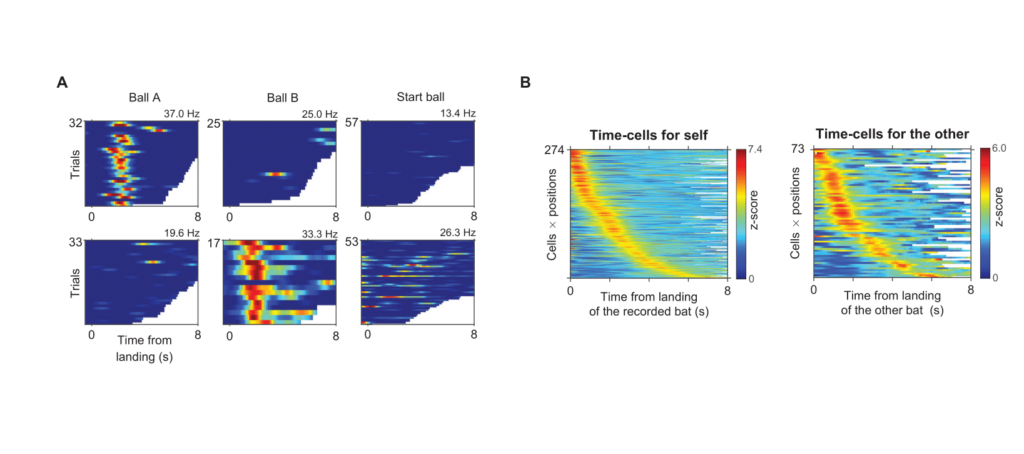Our ability to travel through space –to navigate, and to form episodic memories – memories of “What, Where and When”, depend critically on our ability to perceive and track time. A recent paper by Dr. David Omer and colleagues, published in Nature Neuroscience, reports on new and surprising findings related to hippocampal ‘time cells’, neurons which are known to form precise firing sequences and are thought to be involved in time perception. The study reports on two surprising discoveries: First, that time cells in the hippocampus come in two flavors. One flavor display different temporal sequences when a bat hung at different locations in space, thus encoding time and space conjunctively, like a clock that tracks both time and our location in space simultaneously- a ‘spacetime’ clock. The second flavor of time-cells show the same firing sequences at different locations in space, similar to an ordinary clock that shows the same time, no matter where you are.
The second surprising finding is related to social others. The paper report that the same population of hippocampal time cells can also form firing sequences relative to the landing moment of another bat, thus measuring time relative to actions and place of others. These surprising and diverse time-codes may support our ability to measure and perceive time intervals and to form episodic memories that happened to myself as well as to others. They may also support our ability to coordinate our actions in space and time with others, an ability which is crucial for the survival and reproduction of every social mammal, including us. Time will tell.
Figure:



